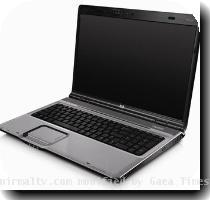Review: Cheaper, but not cheapest, gaming PCs offer decent play for even most demanding games
By Ron Harris, APWednesday, December 23, 2009
Review: Cheaper gaming PCs offer decent experience
ATLANTA — Personal computers designed specifically for gamers are getting more powerful and more affordable by the month. They’re bursting with multi-core processors, powerful video graphics cards and plenty of memory to give you the most realistic graphics and action.
Although it should come as no surprise that the computers that can run games consistently well are the ones at the high end of the price spectrum, I found machines for about $1,000 that can give you decent play.
The cheapest ones, though, were disappointing when confronted with complex games that can push a system to its limit.
With prices coming down, PC gamers on the verge of buying a new machine must ask themselves: Does it look cool, and can it run “Crysis”?
“Crysis,” a futuristic first-person shooting game, has steeper hardware requirements than typical games, which already tend to push the boundaries. So if your computer is powerful enough for “Crysis,” it can likely run any game on the market.
The machines that run “Crysis” well have powerful graphics cards and multi-core processors — essentially several processors on a single chip working in synch.
These computers also have a generous amount of random access memory, or RAM, which is key to letting games to run smoothly. The myriad computations a game requires each second are primarily made with data uploaded on the fly to the available RAM on your computer. The more you have, the more data your computer can access quickly.
In my tests, Falcon Northwest delivers the best machines when price is no object.
At $3,856, Falcon Northwest’s diminutive FragBox is a serious ding to the wallet, but it packs twin graphics cards for multiple display support, 12 gigabytes of RAM and an Intel Core i7 processor rated at cool 3.06 gigahertz — all in a box that’s much shorter than the typical tower PC. At that price, you also get a 24-inch Samsung high-definition LCD display.
The FragBox ran “Crysis” and another processor hog, “Red Faction: Guerrilla,” without a hitch. These are two of the most demanding games on the market because of their detailed graphics and complex action sequences.
The FragBox also scored well in benchmark tests I conducted using software from Futuremark Corp., which measures graphics rendering and other processing tasks at various display sizes and quality settings. Put simply, the FragBox can run the most complex games at the most extreme settings.
Contrast that with something at the low end of the price spectrum: the $499 Maelstrom from CyberPower Inc.
It’s a full-sized, tower unit that has a rugged, futuristic appearance. This unit comes with an AMD Athlon 2.8 GHz processor and 2 gigabytes of RAM. That’s one-sixth the memory offered by the FragBox.
There is noticeable lag if you’re attempting to play games on a large display at full screen and in high resolution with a paltry amount of RAM. I had to settle for playing “Crysis” and “Red Faction” in a smaller window; the dreamy full-screen experience was a no-go here.
CyberPower did come through strong, however, with another tower model priced $500 higher at $999. The Gamer Xtreme 4200 sports has an ATI Radeon high-definition graphics card and the latest Intel processor from the Lynnfield line, a Core i5 running at 2.66 GHz.
More importantly, the Gamer Xtreme 4200 has double the RAM — at 4 gigabytes. That helps support Intel’s new chipset, and the results showed. The benchmark test scores revealed high frame rates per second when rendering graphics. I was able to play “Crysis” and “Red Faction” full-screen without any issues.
At a similar price, iBuyPower offers a variety of models, including the $999 Chimera. That machine performed admirably in tests. I didn’t experience any performance drops when playing “Red Faction” at 1680 x 1050 resolution, an above average display quality. Bumping it up to 1920 x 1080, however, led to some lag and stuttering as I scanned the horizon for enemies during the game.
The Chimera comes with a decent ATI Radeon graphics card, but if you’re going to spend an extra $150 on an upgrade, that would be the likely candidate. The chipset is solid, and the 4 gigabytes of RAM is fine. It just needs a stronger graphics card to take it to the next level.
If you simply must have a laptop specifically for your gaming needs, Dell’s Alienware M17x is a smart buy, but it will set you back $1,799 at its cheapest configuration. I tried a tricked-out model that sells for $3,899. The result? I was able to play “Crysis” over coffee at a cafe in high definition at the most extreme settings, something few other laptop toters can boast.
One drawback of the Alienware laptop is size. It’s a heavy beast that you would never want to carry around in a backpack or briefcase. It’s more of a desktop replacement than a traveling companion.
The M17x has an Intel Core2 Extreme Quad processor operating at 2.53 GHz, sitting alongside a powerful graphics card to deliver those high-frame rates for “Crysis” and similar games. It comes with 4 gigabytes of RAM, and all the components are fine-tuned to deliver a high-end, high-quality gaming experience.
In summary, if you’ve got $1,000 or less to spend, I’d recommend something from CyberPower. The company builds very aggressively styled, affordable machines that can still give you decent play. If money is no object and you want a machine that looks nicer than a Ferrari, Falcon Northwest is the trend setter.
Anything less than $700 runs the risk of feeling slow and outdated once the next incarnation of “Crysis” comes out. If you’re at all a serious gamer, you’re better off spending a little more and planning ahead.
One the Net:
www.ibuypower.com
cyberpowerpc.com
www.dell.com
www.falcon-nw.com
Tags: Atlanta, Computer Hardware, Computing And Information Technology, Consumer Electronics, Games, Georgia, North America, Recreation And Leisure, United States

